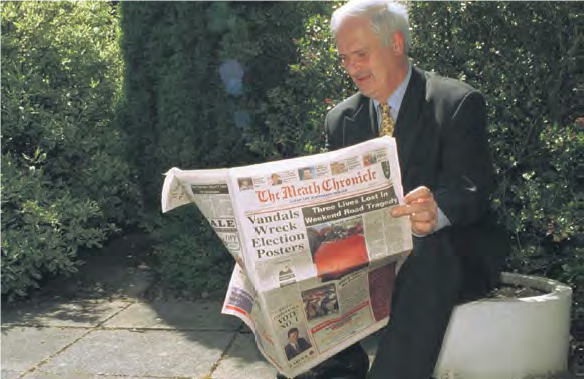The Irish Regional Press, 1892-2018: Revival, Revolution and Republic
by Ian Kenneally & James T. O’Donnell (Four Courts Press, €50)
Felix M. Larkin
This volume, which originated in a conference held in Dublin City University in 2014, is a valuable addition to the growing body of work on Irish media. It comprises 14 essays with a substantial foreword by John Horgan, a pioneer of media studies in Ireland.
Lord Decies, press censor during the First World War, wrote to his superiors in Dublin Castle in 1918 that “every little district has its local ‘rag’ which is keenly read…and has a far-reaching effect”.
His aristocratic disdain for such newspapers was probably because they had been largely sympathetic to Irish nationalist aspirations in the period since newspapers had begun to flourish in the 1850s, as demonstrated in Christopher Doughan’s wide-ranging contribution to this volume of essays.
He characterises the emergence of a vibrant regional press in the years up to Irish independence as “a supplementary nationalism”.
Doughan identifies the most distinctive features of the newspapers in question: a high degree of family proprietorship, prolonged editorial reigns, and a steadfast Catholic as well as nationalist ethos.
Moreover, a significant number of local pressmen were elected to parliament as Irish Party MPs. There were some Unionist / Protestant local newspapers, of which the Skibbereen Eagle – with its eye on the Tsar of Russia – is the best remembered; most of them disappeared with the advent of independence.
Dispensation
The nationalist local press accommodated itself easily to the new dispensation after independence – almost all supporting the 1921 Anglo-Irish Treaty. As Donal Ó Drisceoil points out in his essay on censorship in 1916-23, “these essentially commercial enterprises followed rather than led public opinion for reasons of survival”.
Now, however, the landscape has changed – due to the wholesale acquisition of local titles by a small number of corporate media groups, notably Independent News and Media. This has weakened the extent to which regional newspapers are embedded in their communities and serve local needs.
There are other problems too. Andrew Cawley’s essay highlights that the regional press has shown “few signs of significant recovery” from the effects of the crash of the Celtic Tiger and so is “struggling to generate the revenues necessary to resource a market-based Irish local journalism”.
This volume documents the role of the regional press not only in politics, but also in fostering sport and Irish language revival – and as a training ground for journalists who went on to stellar careers in national newspapers and with RTÉ.
There is a comprehensive essay on the Kerryman, one of the most significant local newspapers – and other essays survey the local newspaper industry in Sligo and in Cork in the pre-independence era. One of the volume’s two editors, Ian Kenneally, writes about the impact of the Internet.
The other editor, James O’Donnell, discusses the regional press’s coverage of foreign news – sourced largely, though not exclusively, from international news agencies. He outlines the close involvement of Irish newspapers, both local and national, in the formation and management of the Press Association (PA) – and he tells us that the first suggestion to form a cooperative venture on the lines of PA came from a Mr Fisher of the Waterford Mail in 1865.
Nevertheless, the focus of Irish regional newspapers remained primarily local. O’Donnell notes that, while commenting on overseas events such as the Boer War, the newspapers would use these events “as a prism” through which to consider specifically Irish – and even local – concerns.


 Former Taoiseach John Bruton reading his local paper.
Former Taoiseach John Bruton reading his local paper.